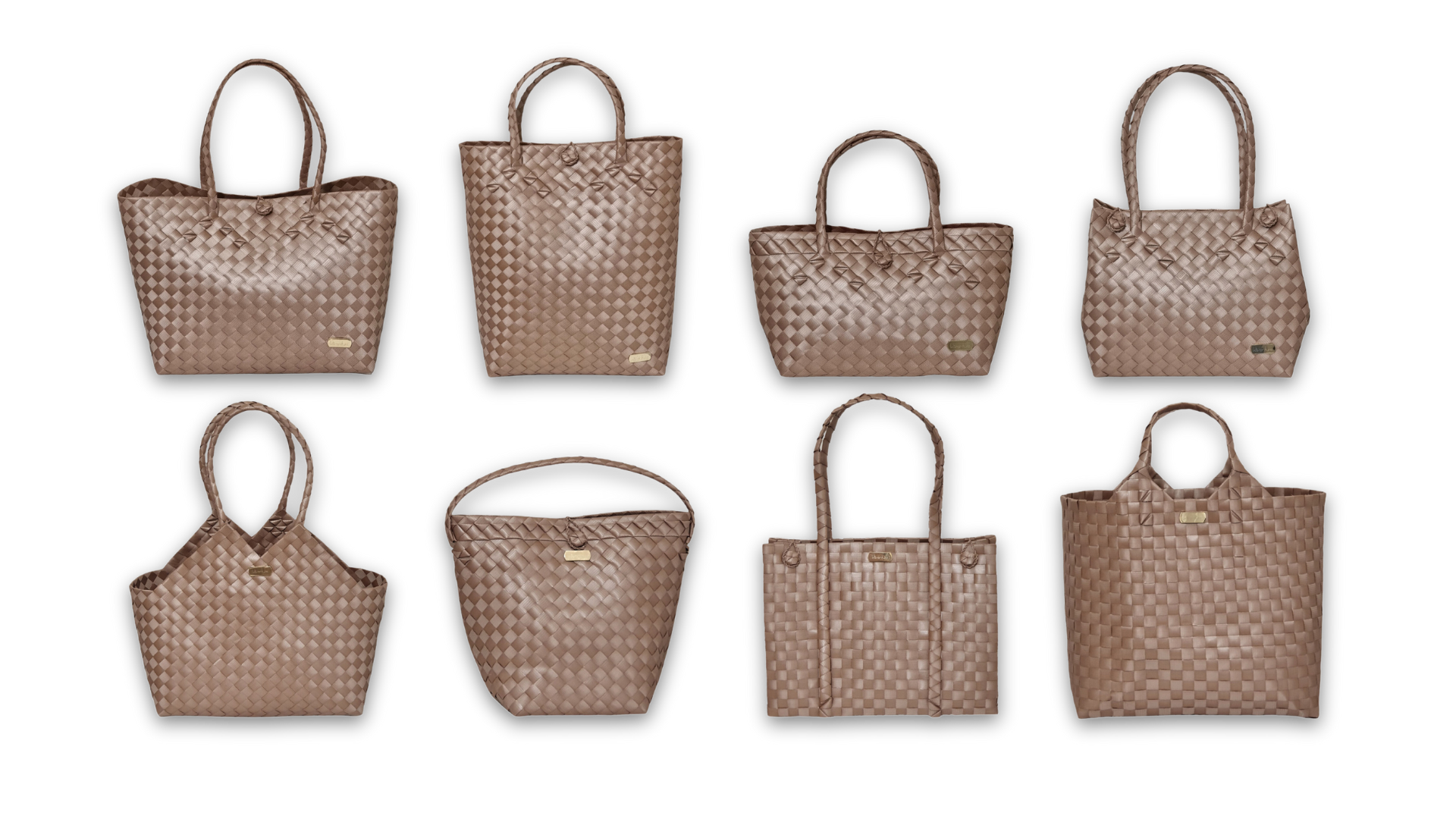What is Bayong?
Ba-yóng
For Filipino, it means bag, basket, made of woven palm leaves. It can also mean bird in another local dialect in the Philippines. Bayong is common among Filipinos going to wet markets, especially in rural areas or provinces. Recently, the Bayong has been promoted as an environmentally friendly alternative to single-use plastic shopping bags. Furthermore, weaving is a significant part of the Philippines' art and culture.
Filipinos weave different things like slippers, hats, bags, and mats. And making Bayong is another famous art weaving in the Philippines. It is an alternative to plastic bags, which may vary in design and pattern due to their hand-cut nature. Locals usually use Bayong to carry groceries as they head off to the market. The use of Bayong before was more popular in the provinces than in the cities, but today it has evolved into a more fashionable style. Today, Bayong is versatile and comes in different shapes and colors.
Origins and Cultural Significance
The word "Bayong" connotes being Filipino. It represents the Filipino values of hard work and Bayanihan. It is also a national icon that is distinctly Filipino and brings an appreciation of our country'scountry's cultural heritage.
The bayong has a rich history deeply rooted in Filipino culture. It traces its origins back to the pre-colonial era when indigenous communities crafted bags using native materials such as buri leaves, rattan, pandan leaves, and bamboo. These bags served as versatile containers for various purposes, from carrying goods to gathering crops.
Over time, the bayong became an integral part of Filipino identity, evolving into a fashion accessory that embodied the country'scountry's vibrant heritage. The intricate weaving techniques and unique designs of the bayong became representative of different regions within the Philippines, showcasing the diversity of local craftsmanship.
Bayong and Sustainable Fashion
In addition to its cultural significance, the bayong aligns with the principles of sustainable fashion. Fast fashion'sfashion's detrimental impact on the environment and exploitative labor practices have led many to seek alternatives that prioritize ethical production and conscious consumption.
The bayong embodies sustainability in various ways. Its materials are natural, renewable, and biodegradable, reducing the carbon footprint associated with synthetic materials. Moreover, the bayong's durability ensures longevity and contributes to a more sustainable lifestyle. The challenge today is to repurpose the material from its primary function and design aesthetical styles, patterns, and color matches while perpetuating a sustainable impact on the environment and social responsibility.
https://bayong-kliventure.company.site/
Empowering Local Artisans
Promoting the bayong is a way of empowering local artisans by providing them with sustainable sources of income. The process of creating a bayong involves intricate weaving methods that have been handed down from one generation to another. By recognizing and celebrating these skills, we can encourage the preservation of traditional craftsmanship and ensure its continuity for future generations.
Local communities and organizations are playing a vital role in supporting these artisans. They provide training, resources, and market access, enabling artisans to reach a broader audience and secure fair compensation for their work. By promoting the bayong, we actively participate in this process and help uplift Filipino artisans and their communities.
Modern Filipina carrying Bayong
Speaking of empowering local artisans and local businesses, this is the primary advocacy of Ivy Jill. She is a Filipino proprietress passionate about creating an opportunity to showcase Filipino designs and innovative products that are suitable and can be exported abroad.
When she moved to Finland for good, she set up Kliventure Finland to carry on her business programs and promote Filipino designs in any way she could. She couldn't find any reason not to continue what she had started, pursuing her passion and interest in art, handmade items, and entrepreneurship. Then, she needed to come up with a decision on what product she would bring first to the Nordic country—a product that would represent Filipino resilience and talents, a product that would describe her and align with her business values. The product had to be personalized, unique, eco-friendly, ethically made, and sustainable. Being an ambassador of the Bayong bags designed by Filipino designer Don Cristobal even before, she had no doubt that the Bayong was not just artistically crafted but would also stand the test of time.
https://bayong-kliventure.company.site/
Ivy brought the 100% Handcrafted Bayong to Finland to be part of her gift collection. She believed Bayong characterizes her as a modern Filipina: simple, creative, flexible, and strong. She is a person who is still capable of being soft and, at the same time, able to show strength in times of need. She embraces her identity with poise and pride. She respects tradition and adapts to the challenges of the modern era, just like "Modern Bayong" is very versatile. For Kliventure, Bayong is not only a Bag but represents every Filipino, like any individual who carries baggage in their life. Same as Bayong Bag that can withstand a heavy load despite its simplicity. Simple Filipinos have a lot to offer, not only in the Philippines but also abroad.
Bayong in Modern Times
In recent years, the bayong has experienced a resurgence in popularity due to its eco-friendly nature and the growing demand for sustainable fashion. As individuals grow more aware of their ecological consequences, they are turning to traditional, handcrafted products that embrace ethical practices and support local economies.
Promoting the bayong goes beyond its physical attributes. It represents a commitment to preserving cultural traditions and supporting Filipino artisans. By choosing to use and showcase bayongs, individuals can contribute to the livelihoods of these skilled craftsmen and women, many of whom come from marginalized communities.
Bayong Bag will survive the test of time and style. Bayong is very versatile and comes in different patterns and colors. Each bag is handmade by a community of men and women who sustain their livelihood through Bayong Bag making. The good thing about this Modern Bag is that it is made of lightweight but stiff polypropylene materials. It can easily clean with water, wiped, and sanitized, yet stylish when you go for a picnic, do groceries, or do other daily errands. It'sIt's so handy!
Giving Back to the Philippines
Promoting the bayong is not just about embracing a fashionable accessory; it is an act of giving back to the Philippines. By supporting local artisans and sustainable practices, we contribute to the preservation of cultural heritage, economic empowerment, and environmental sustainability.
As consumers, we have the power to shape the fashion industry and create a positive impact. Embracing the bayong allows us to make a statement against the homogeneity of mass-produced fashion and support the rich artistic traditions of the Philippines.
So, the next time you reach for a bag, consider the bayong—an embodiment of history, craftsmanship, and the resilience of a nation. By choosing the bayong, you choose to make a difference and promote the unique and beautiful heritage of the Philippines.





